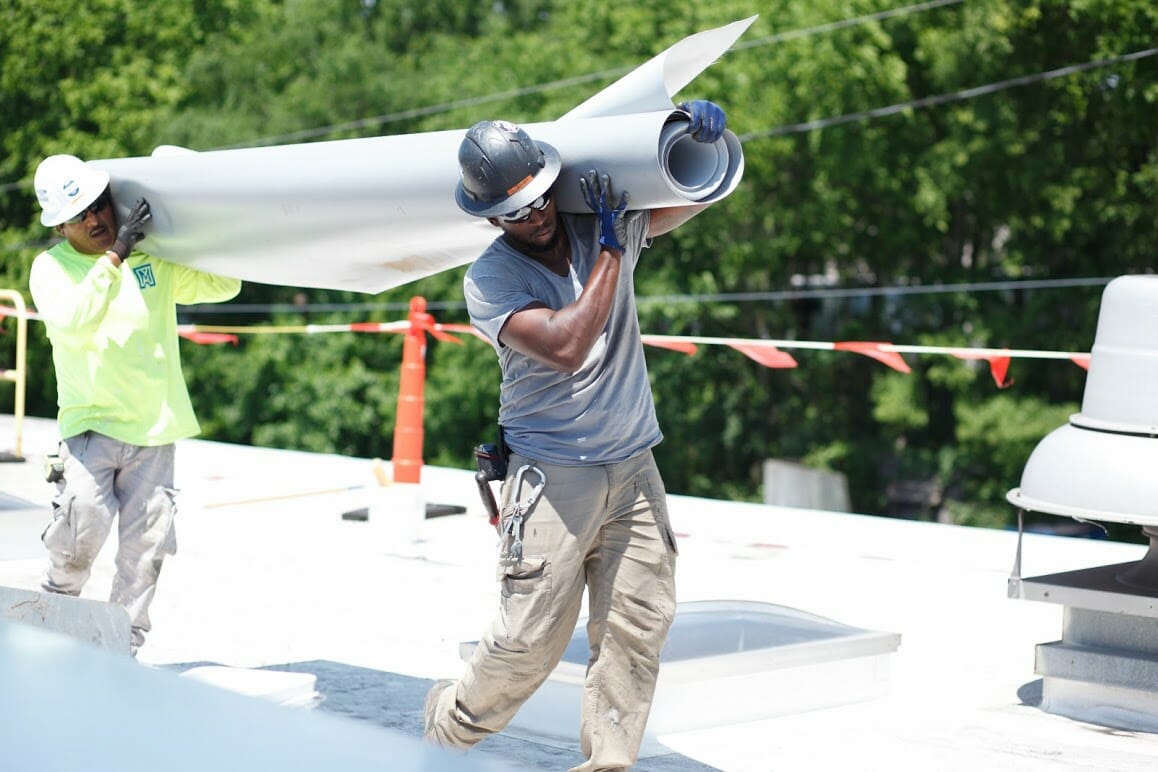No two businesses are alike, and neither are any two commercial roofs. Commercial roofs will differ from each other from the equipment they hold to the type of materials that make up their composition. Every kind of roof and roof material has its pros and cons.
Here, we will look at some of the most common types of materials used on commercial roofs and explore the advantages and disadvantages of each one:
Polyvinyl Chloride Membranes
Known in the roofing business as PVC, Polyvinyl Chloride Membranes are one of the most popular commercial roofing materials. PVC roofs are made up of two layers of roofing material with a polyester layer in the middle for reinforcement. PVC is popular because it is extremely durable and long-lasting. It is also resistant to fire and moisture. The main downside is that PVC can be expensive compared to other roof materials. The material can also be difficult to repair when it ages.
Ethylene Propylene Diene Monomer
EPDM is commonly known as rubber roofing. This roofing material is easy to install, lightweight, long-lasting, and is one of the most inexpensive roofing materials. While EPDM roofs will last a long time in perfect conditions, they do puncture easily. Rubber roofs can also spring leaks easily if they are not properly adhered and leaks are difficult to detect in this material. EPDM is also not considered to be very aesthetically pleasing for buildings where the roof will be visible.
Metal Roofs
Many different kinds of metal can be used in commercial roofing from copper to galvanized steel to aluminum. Each type of metal has its own advantages and disadvantages but, generally, metal roofs are among the most durable and long-lasting roof options. Metal opens up a whole world of design options for a building, and the material is usually used for buildings where looks are a concern. Metal roofs also tend to be more fireproof than other types of roofing material, but it can be expensive.
Thermoplastic Polyolefin
In most cases, thermoplastic polyolefin, or TPO, is the cheapest roof material available. TPO is similar to both PVC and EPDM, but it is 100 percent recyclable. TPO is a lightweight membrane that is typically heat-welded at the seams rather than adhered like EPDM—however, it can also be mechanically fastened. This welding makes TPO more resistant to leaks than EPDM, but the material also has many disadvantages. TPO is prone to shrinking and cracking. The material is also not fire-resistant.
Spray Polyurethane Foam
SPF is a plastic that is sprayed out as a foam that then solidifies and expands over a rooftop. This foam seals off gaps on the roof and is extremely insulated, helping owners save on energy bills. SPF is typically layered onto a roof underneath another roof coating. Applying SPF is a specialized skill, and not all roofing companies offer it. Applying and maintaining this material can be expensive.
Because this type of roof is difficult to repair and replace, Maxwell strongly recommends against having this type of roofing material installed.
Asphalt
Asphalt is an older method for commercial roofs. The material is rolled out and pressed onto a roof deck. Asphalt roof systems are typically more expensive than PVC, EPDM, and TPO but are also more durable and long-lasting. They are very tough and puncture-resistant due to the multiple plies included in the system. This type of material is recommended for manufacturing plants or any roof that will have roof traffic or penetrations.
Our roofing experts at Maxwell Roofing & Sheet Metal, Inc. are committed to helping every client figure out the best type of roofing material for their project. To learn more, contact Maxwell today.

